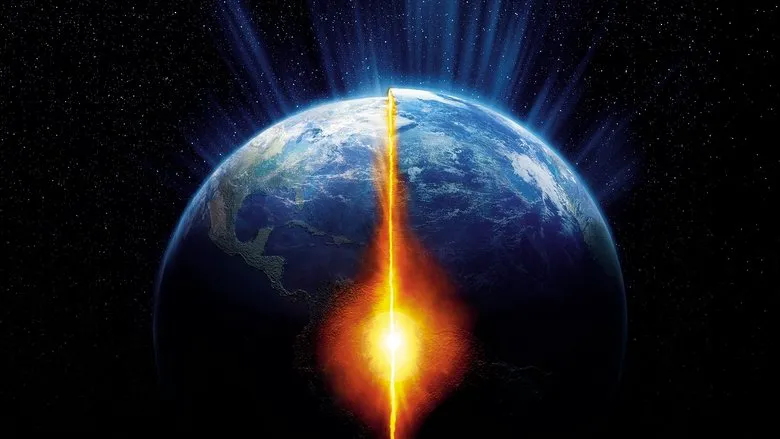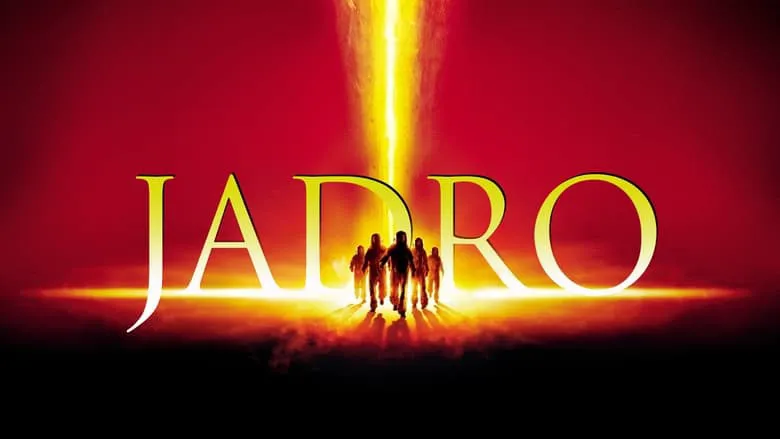In the tranquil setting of New York City, a group of employees is energized in the office before a morning meeting. Nearby, parents chase after their children in a playground. The group enters the boardroom, and their leader begins to speak, uttering only “A…” before collapsing face-first onto the clear table. Simultaneously, half of the children and parents in the playground also fall and die. The scene cuts to thirty-two bodies laid out under sheets on tables in a morgue, resembling a quiet hour in a summer camp.
Meanwhile, an American space shuttle is preparing to land, running low on fuel. Suddenly, a computer malfunction occurs, and instead of Cape Canaveral, the shuttle finds itself over Los Angeles. Poised to crash into the city and obliterate everything, a young navigator (Hilary Swank) guides the experienced commander (Bruce Greenwood) on how to land on the river between the bridges. The braking maneuver in front of a construction site is particularly striking, even humorous. This is how the end of the world begins in various cities and regions in the film. It soon becomes clear that the Earth’s core has stopped rotating correctly. It spun and spun, and then it simply stopped.

Predictable Disaster
From this point, one can imagine what follows. The American government is in disarray, with less than a year to live before everyone is incinerated (as demonstrated visually). An expedition is assembled, a super-earth-boring machine is built, and six brave souls journey to the Earth’s center to detonate it and jumpstart its rotation. Of course, the plot raises numerous questions, but it’s best to allow viewers to laugh at it all if they choose to buy a ticket. After all, Jules Verne was a hit in childhood, and his journey to the Earth’s center featured dinosaurs. It seems that before the Millennium, Hollywood was convinced something would fall on us from the outside, but afterward, they began to hope we would explode from within. The key in such cases is the combination of investment size and the effort to utilize it, which is how the genre is judged. “The Core” had a very respectable budget of $85 million, but it recouped less than a third of that in the US within a month. This is telling.

Lackluster Characters and Story
Regardless of the events, the characters and relationships are generic. Decent, expensive actors like the muscular Aaron Eckhart (“Erin Brockovich”) and the ironic Tchéky Karyo (“Kiss of the Dragon”) are cast in completely standard roles: one woman, one black man, one cowardly traitor, one clever kid, one bad general, and so on. The journey itself lacks originality and is borrowed from other “B-movie” tropes. A submarine encounters a Leviathan, or a spaceship encounters an Alien for the thousandth time. The crew of the submarine or rocket inevitably loses contact with headquarters, or headquarters decides to destroy them for safety reasons. They must venture into open space or the open ocean at least once, and they die off one by one in various ways. The remaining crew members deliver heroic, meager speeches and clench their jaws, displaying firm chins. Inevitably, two submariners of opposite genders survive. “The Core” replicates all of this almost identically, without any variations. The script is atrocious.

Unconvincing Visuals
Even worse, the magma-crust-muck, given the high costs, is unconvincing. It doesn’t resemble the Earth’s crust. Despite the lasers, the earth-boring machine moves through the rock at the speed of a race car, which is unbelievable. In reality, there would be a laser followed by slow, jerky progress, not a smooth glide. The magma looks more like a lunar landscape, clearly filmed using an internal combustion engine. The finale, where the astronauts try to rearrange megaton atomic bombs in the correct order and keep dropping them, is particularly comical. This could have been a great, over-the-top farce, but then nothing should have resembled reality. It’s strange that the experienced director Jon Amiel didn’t realize this. Some aspects of “The Core” are better than recent high-budget disasters like “Deep Impact” and “Armageddon.”
The surface events, such as the aforementioned opening, which includes an effective quote from Hitchcock’s “The Birds,” the aurora borealis over New York, and the ozone hole over San Francisco with the collapse of the Golden Gate Bridge, are well-executed. Apparently, Amiel, who once directed the realistic “Sommersby,” is more comfortable with potentially real disasters. He didn’t enjoy science fiction as a child. The question is, how much will this dislike cost Paramount Studios in financial losses?
But there’s always a benefit for the viewer: the worse Hollywood’s bad prophecies are, the more confident we can be that nothing will happen.